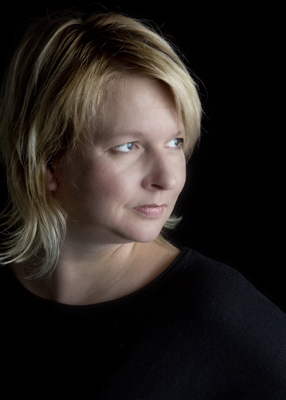Behind the scenes
and in the spotlights
at Moooi
Milan 2016

Behind the scenes at Moooi Milan Designweek 2016 by C-More
A few weeks after The Milan designweek 2016 it’s easier to see what was most impressive. The Moooi collection 2016 presentation was one of them.
At the via Savona 56 , Moooi transformed the space into a surprising and creative area. In the atrium, the furniture was installed in the dark with just spotlights on them. Like the Compression Sofa made out of marble by Paul Cocksedge. Or the Charleston Sofa, which looks like a Chesterfield sofa placed on the side. I loved the Floor lamp Filigree by Rick Tegelaar. Also the Anami Sofa by Lorenza Bozzoli, which was made out of beautiful deep blue velvet with degrade fringes. This sofa looks so tempting… If it wasn’t in the spotlights I think I could sit in it the whole day and just relax…
About the Marble Compression sofa:
‘I wasn’t thinking of designing a sofa,’ affirms Paul Cocksedge when talking about the Compression sofa. ‘I had a block of rectangular foam on my desk and I just pushed down one part and saw, almost in slow motion, this transformation, from an angular block to a curvaceous figure and thought, “it would be great if a person could sit there”. There were no sketches or technical drawings involved, instead we allowed the material itself to define the shape.’.
Behind the scenes, You could wander around several rooms, all with the new signature rugs and carpetings. Lot’s of colorful and artistic , ornaments and surreal designs. I can imagine some of you have to get used to this eye-catching floors, but I must say, It can make the room! Personally, I would love to combine these rugs with a more clean and empty space. But hey, that’s me. We all know that Moooi is about the theatrical design.
All the rooms were decorated as someone lived in it. This way you got an intimate warm and even a somewhat feminine feeling and a sense of home.
A lot of the designs were soft, and round shaped, with textured upholsteries like velvet and felt. Of course, the lighting objects were stunning, as Moooi always does. And the big oversized prints by photographer Rebecca Bathory were completing the setting.
Enjoy!!
More info at Moooi

Paul Cocksedge | Compression sofa | In the spotlight | Moooi Milan Designweek 2016 by C-More

Amami Sofa | Lorenza Bozzoli | In the spotlight | Moooi Milan Designweek 2016 by C-More

Charleston Sofa | in the spotlight | Moooi Milan Designweek 2016 by C-More

Floor lighting | Filigree by Rick Tegelaar | In the spotlight | Moooi Milan Designweek 2016 by C-More

Perch Light | Umut Yamac |Moooi Milan Designweek 2016 by C-More

Textile | Texture | Moooi Milan Designweek 2016 by C-More

Textile | Texture | Moooi Milan Designweek 2016 by C-More

Behind the scenes furniture setting | Moooi Milan Designweek 2016 by C-More

Perch Light | Behind the scenes furniture setting | Moooi Milan Designweek 2016 by C-More

Lighting | Rug | Sofa | Behind the scenes furniture setting | Moooi Milan Designweek 2016 by C-More

Lighting | Rug | Sofa | Behind the scenes furniture setting | Moooi Milan Designweek 2016 by C-More

Buro | workplace | Behind the scenes furniture setting | Moooi Milan Designweek 2016 by C-More

Red Sofa | Rug | Behind the scenes furniture setting | Moooi Milan Designweek 2016 by C-More

Behind the scenes furniture setting | Moooi Milan Designweek 2016 by C-More

Behind the scenes furniture setting | Moooi Milan Designweek 2016 by C-More

Behind the scenes furniture setting | Moooi Milan Designweek 2016 by C-More

Behind the scenes furniture setting | Moooi Milan Designweek 2016 by C-More

Lighting | Behind the scenes furniture setting | Moooi Milan Designweek 2016 by C-More

Behind the scenes furniture setting | Moooi Milan Designweek 2016 by C-More

Lighting | sofa | Carpet | Behind the scenes furniture setting | Moooi Milan Designweek 2016 by C-More

Coffee table | Behind the scenes furniture setting | Moooi Milan Designweek 2016 by C-More

Behind the scenes furniture setting | Moooi Milan Designweek 2016 by C-More

Behind the scenes furniture setting | Moooi Milan Designweek 2016 by C-More

Behind the scenes furniture setting | Moooi Milan Designweek 2016 by C-More

Behind the scenes furniture setting | Moooi Milan Designweek 2016 by C-More

Behind the scenes furniture setting | Moooi Milan Designweek 2016 by C-More
ACHTER DE SCHERMEN
EN IN DE SCHIJNWERPERS
BIJ MOOOI
MILAN 2016
Een paar weken na de Milan Designweek 2016 is het makkelijker om te zien wat het meest indrukwekkend was. De Moooi collectie 2016 presentatie was er een van.
Aan de via Savona 56, transformeerde Moooi de ruimte in een verrassende en creatieve omgeving. In het atrium, was het meubilair in het donker geïnstalleerd, met slechts de schijnwerpers op hen gericht. Zoals de Compression Sofa, gemaakt van marmer door ontwerper Paul Cocksedge. Of de Charleston Bank, die eruit ziet als een Chesterfield bank op zijn zij. En Prachtig, die vloerlamp Filigree ontworpen door Rick Tegelaar. Ook de Anami Sofa van Lorenza Bozzoli was bijzonder mooi, met het diepe blauw fluweel en met degrade franjes. Deze bank ziet er zo verleidelijk uit … Als ie niet in de spotlights stond, was ik er graag de hele dag op gaan zitten om gewoon even relaxen in drukke Milaan …
Over de Marble Compression bank:
‘Ik dacht niet aan het ontwerpen van een bank,’ bevestigt Paul Cocksedge wanneer we spreken over de compressie bank. ‘Ik had een blok van rechthoekige schuim op mijn bureau en die heb ik gewoon naar beneden geduwd, en zag, bijna in slow motion, deze transformatie, van een hoekige blok naar een gewelfde figuur en dacht: “Het zou geweldig zijn als er een persoon in kan zitten”. Er waren geen schetsen of technische tekeningen bij betrokken, maar we lieten het materiaal zelf de vorm definiëren. ‘.
Achter de schermen, kon je rond wandelen door verschillende kamers, allemaal met de nieuwe “Signature” tapijten en carpetings. Veel kleurrijke, artistieke, vol ornamenten en surrealistische ontwerpen. Ik kan me voorstellen dat sommigen van jullie even moeten wennen aan deze opvallende vloeren, maar ik moet zeggen, het kan de ruimte echt maken! Persoonlijk zou ik graag deze tapijten combineren met een strakke en lege ruimte. Maar hey, dat ben ik. We weten allemaal dat Moooi van de theatrale designs is.
Alle kamers zijn ingericht alsof er iemand woont. Op deze manier heeft de ruimte direct een intiem, warm en zelfs een ietwat vrouwelijk gevoel. En een gevoel van thuis.
Een groot deel van de ontwerpen waren zacht, met ronde vormen, met rijke bekledingen zoals fluweel en vilt. Natuurlijk, de verlichting ontwerpen waren prachtig, zoals Moooi dat altijd doet. En de grote oversized prints van fotograaf Rebecca Bathory waren de puntjes op de i van de setting.
Genieten!!
Meer info op Moooi










































































